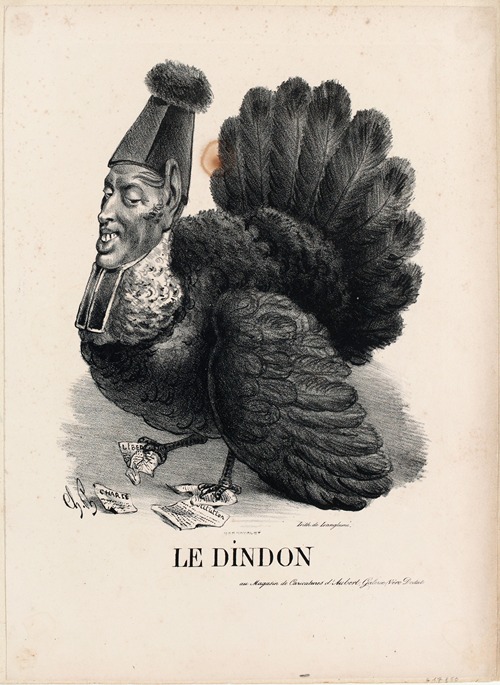
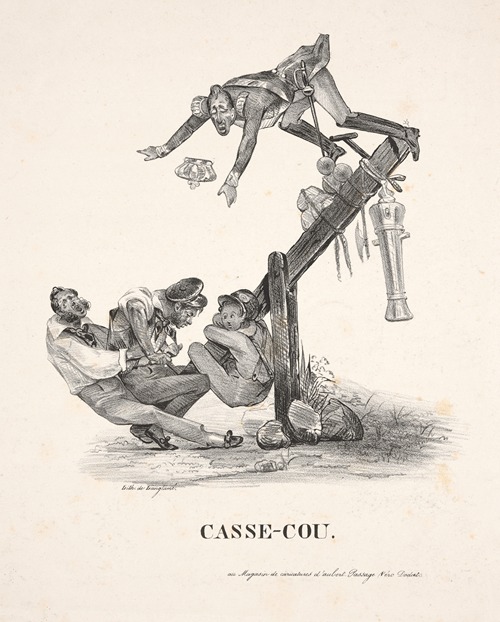
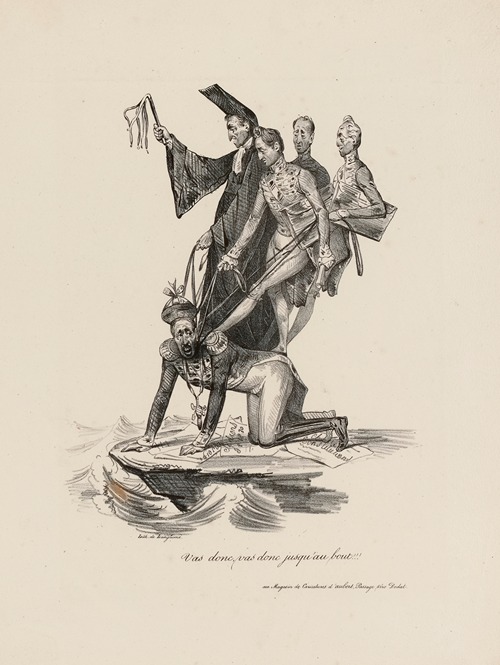
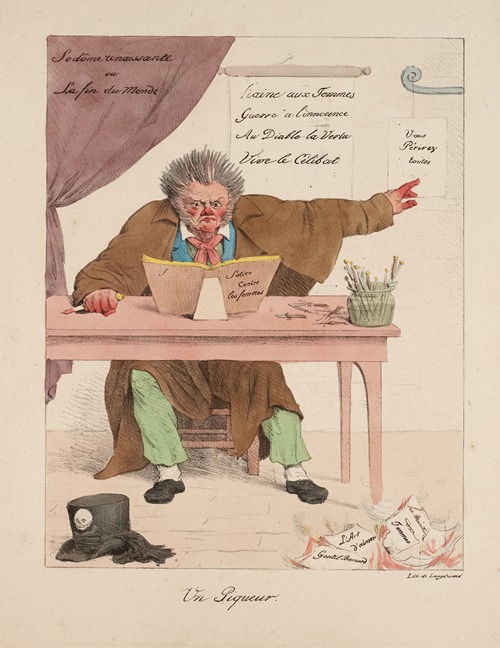
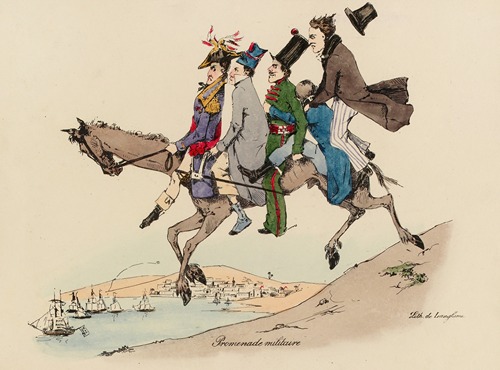

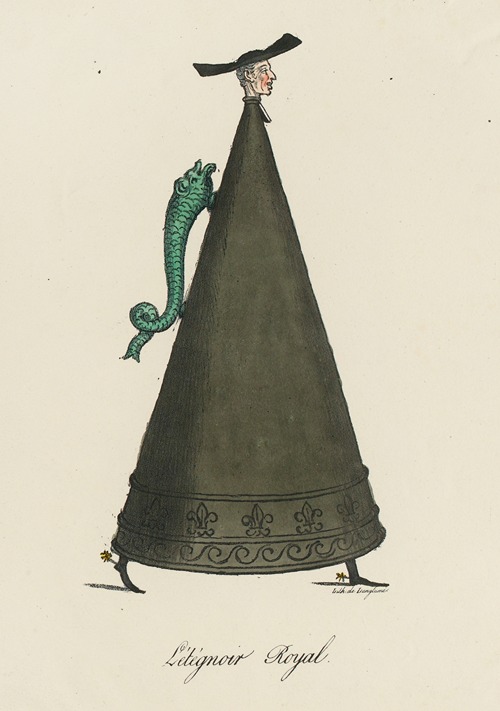
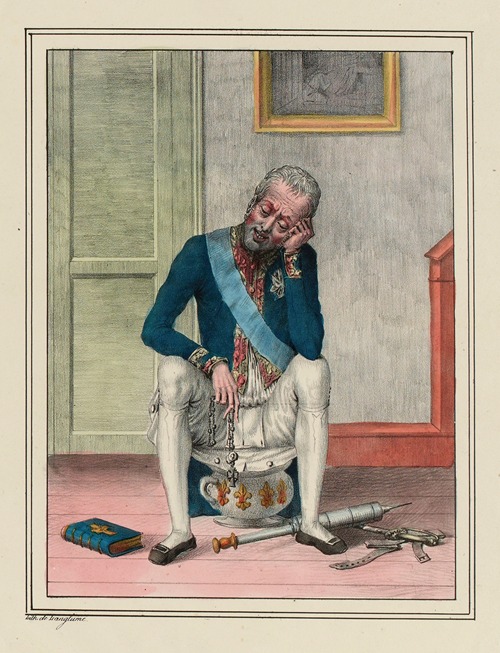
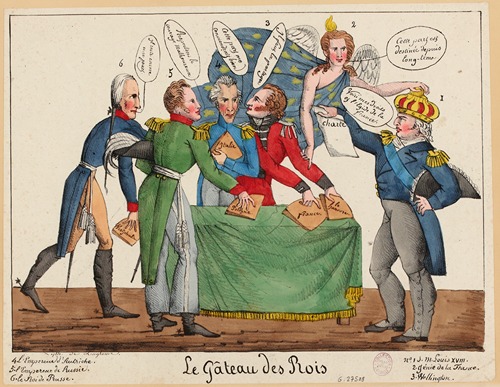
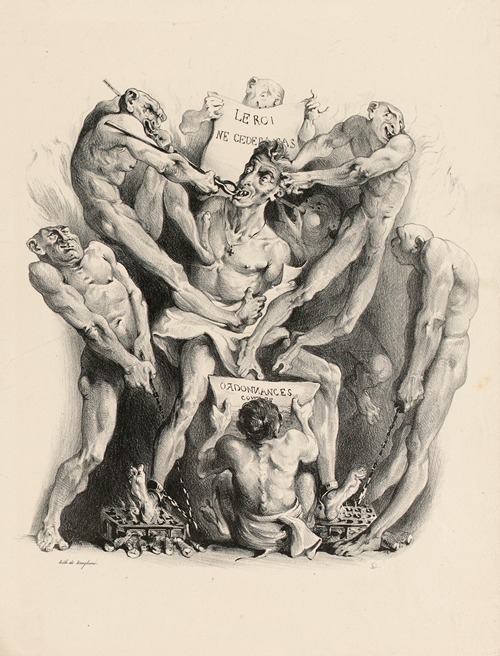
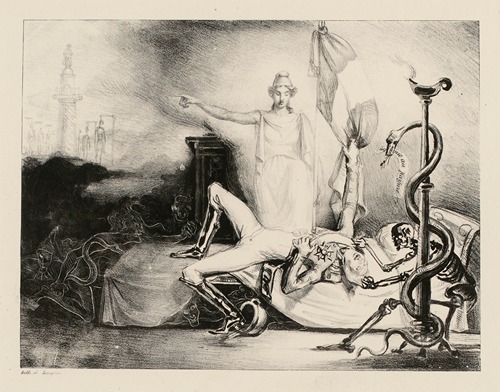



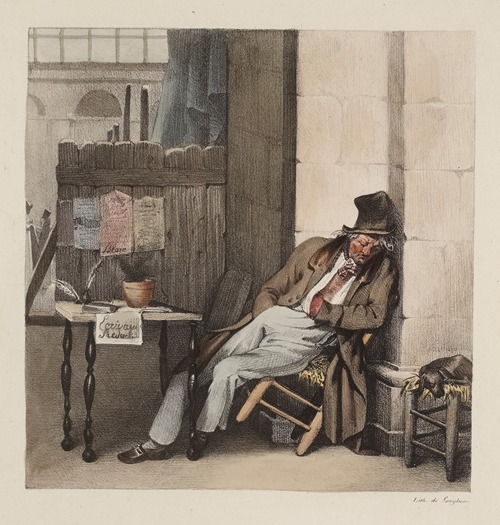
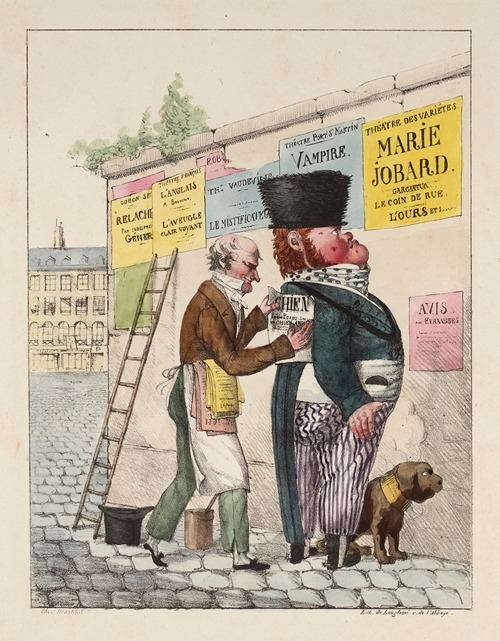


Pierre Langlumé was a French printer and lithographer in the early 19th century, at a time when this technique was becoming established in the capital.
Pierre Langlumé was born in Poitiers in 1790. He married and had three sons.
He began working as a lithographer in 1818 and obtained his license on July 8, 1820. He opened a shop called “À la pierre lithographique” at 4 rue de l'Abbaye in Paris, which included a workshop specializing in the production of lithographs. He was sponsored by Aloys Senefelder and François-Séraphin Delpech.
He illustrated Les Farfadets... (1821) by A.-V.-Ch. Berbiguier de Terre-Neuve du Thym with his lithographs. In 1822, he also illustrated Louis Choris' Voyage pittoresque autour du monde, which was a great success with subscribers. This album was followed by Histoire naturelle des mammifères by Georges Cuvier and Étienne Geoffroy Saint-Hilaire (1824), sharing the work on stone with the Lasteyrie establishment.
He participated in the Salon of 1822 and 1824, presenting reproductions of seascapes, portraits, and landscapes, among others, after Prud'hon and Fragonard. In 1829, he exhibited lithographic experiments with Alphonse Chevallier (1793-1879) at the Salon de Douai: the two men were described as “lithographers of the navy.”
On several occasions, he won bids against Godefroy Engelmann.
In 1829, he co-wrote Mémoire sur l'art du lithographe (Memoir on the Art of Lithography) with Chevallier. Improvements to be made, a treatise that was awarded a prize in 1830 and published as a manual in 1838.
He died in early summer 1830. His partner, Victor-Hippolyte Delaporte, replaced him in the workshop at the end of August. In 1840, one of Pierre Langlumé's sons, Antoine-Eugène-Léopold, who had trained with Pierre-Théophile Delarue, also entered the printing and lithography business, as well as intaglio printing, under the name Langlumé, fils.

















